#topminnow
Explore tagged Tumblr posts
Text
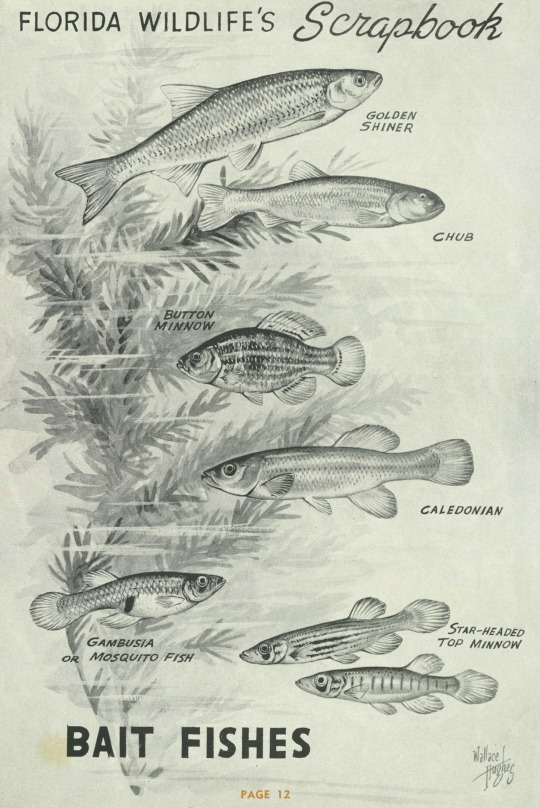
Florida Wildlife; vol. 9, no. 11. April, 1956. Illustration by Wallace Hughes.
Internet Archive
407 notes
·
View notes
Text




Midwest fish series! The sweet Starhead Topminnow ❤️ This little fish used to populate the wetlands around the lower Wisconsin river. In the late 2000’s, the US went all-in on corn-based ethanol and corn production ramped up to an insane degree. All that new farming caused a great deal of toxic runoff that destroyed the floodplains and sloughs around the lower Wisconsin, and the topminnows vanished. HOWEVER, due to the incredible efforts of conservationists with the WI dnr, led by John Lyons, a small population has been moved above the Prairie du Sac dam (pictured) and is thriving in clean water.
#art#traditional art#artist of tumblr#illustration#foldoutanatomy#foldoutart#fish art#midwest#starhead topminnow#prairie du sac#wisconsin#lower wisconsin river#water conservation#drawing#art on tumblr#artists on tumblr#nature#watercolor
17 notes
·
View notes
Text
A pike among the toothcarps
The pike topminnow or killifish, Belonesox belizanus, is one of the more unusual members of one of the toothcarp subclade Poecilidae, among which it also happens to be the largest species. To judge by its pike-like appearance and habits, it might seem unlike the common aquarium poecilids, the familiar mollies and guppies, platies and swordtails, with which it shares viviparous habits as a livebearing toothcarp, through common descent. But is raptorial instincts are not far dissimilar from its closest cousins, the insectivorous poecilid toothcarps of the genus Gambusia, which are also viviparous. The evolutuonary difference is that the insectivorous ancestors of Belonesox had switched to a diet composed of larger prey, specifically, other fishes. For this purpose, its skull is organised so as to widen its gape size, and Belonesox now prey upon their Gambusia kin, swimming near to the water surface.
The female B. belizanus are larger than the males, as they grow to a maximum length of 15 centimeters or 6 inches, while the males are between a 1/3 and 3/4 of this length. These predators will attack fish they can swallow, including their own species, so the males and females of B. belizanus must be carefully matched. In any case the females, being larger and more obvious to collectors, are exported more often than the males. Bushy, live plants will aid the fry when they atesheltering from their own parents, for they are seen as prey after parturition. Historically, this species was said in aquarium books, to belong strictly in single species aquaria. But like most ambush predators, they are usually harmless to fish that are simply too large to be perceived as food. New imports may not take aquarium foods, but acclimatised and captive bred fishes will actually accept defrosted fish and crustacean "prey", despite claims that are still often repeated to the contrary.
Wild B. beliz anus are found in waters that have a temperature from 25 to over 30 degrees centigrade. Temperatures as low as 13 degrees limit the spread of this predator, and temperatures of 38 degrees are dangerous to the species.These fishes are adaptable to freshwater, brackish, brackish, and even marine environments, although a specific gravity of 1.030 is detrimental to their health. Feral B. belizanus are recorded in water with a specific gravity, of 1.026, but in their natural range, they appear always to prefer lower salinities than this, and indeed weedy freshwaters, although populations have been observed to live where the substrate is colonised by algae. The juvenile B. beliz anus imitate floating scraps of vegetation, a disguise that is probably more convincing.where aquatic plants are abundant.
Because of its wide environment ornamental tolerances, B. belizanus has adapted to life in human modified environments, and has successfully colonised areas beyond its natural range, which sprawls from Veracruz, Mexico, across to Nicaragua and areas of Costs Rica. Local races of this species have been identified by ichthyologists, and they are demonstrated to vary as to their robusticity. Although historical sources have attempted to distinguish these, genetic testing verified that all the morphs of B. belizanus have remained genetically close to their conspecifics representing the other local morphs. Thus this variable species can rapidly evolve in response to local conditions, as might be expected given its eager adaptability.
#Belonesox belizanus#Pike topminnow#Pike killifish#viviparous fish#Brackish fishes#Poecilid livebearers#predator fish
0 notes
Text

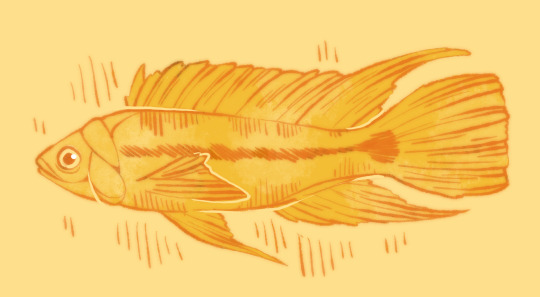
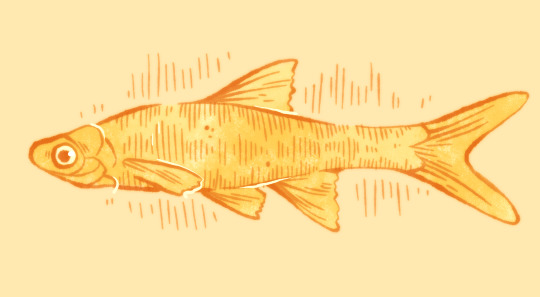
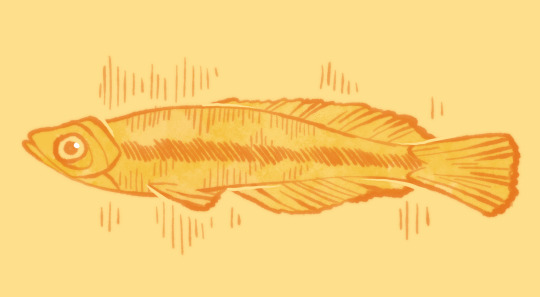

mmmmmmm............... drawing fish
(in order: asian arowana, apistogramma macmasteri, black spotted topminnow, juvenile madagascar rainbowfish, alaskan silver coho salmon)
#reminder that ive worked at an aquarium supply store for over a year#and have four fish tanks#and that i fucking love fish and have a fish tattoo#having to put together an actual portfolio has been so humbling#all my work... and so little that fits in a professional context#fish art
520 notes
·
View notes
Text


You guyyyys, I got a new photo tank for Christmas. Enjoy my new obsession
Fundulus chrysotus, Golden ear topminnow.
62 notes
·
View notes
Text
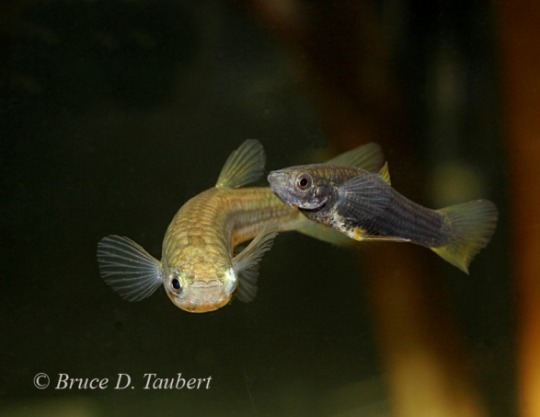
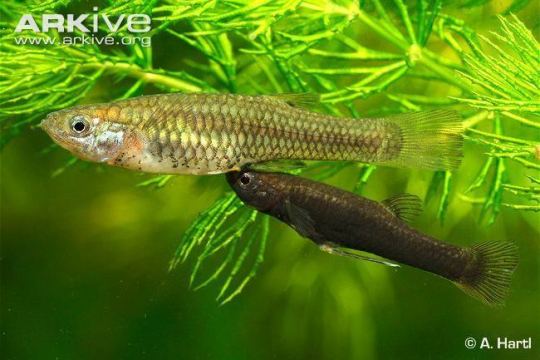
Gila topminnow | Poeciliopsis occidentalis
x, x
57 notes
·
View notes
Note
I’m planning on building a patio pond. It freezes pretty hard here and I don’t really have the time or desire to set up tanks to house fish in over the winter but I’d really like to have some small native fish in the patio pond for the summer. Is there a responsible, ethical way to have something like a topminnow or killifish in a patio pond for just the warm seasons or should I just stick to plants and wait until the hypothetical someday when I can dig a big pond? Thanks!
(I write a lot - sorry in advance!) So in nature there are a number of fish that can be considered annuals - mosquitofish, killifish, and pupfish usually live for a year, are predated upon, and their offspring comprise the generation you see the next year. I have been surprised (to some degrees pleasantly, to some degrees not) that these fish live much longer in captivity. I have Mummichogs and Mosquitofish that are 3 years old roughly - and the killifish has no signs of slowing down.
Which is to say I think taking these fish and putting them in a situation in which they would perish a few years before they reasonably might would be... nonideal.
I would also not recommend catch and release. Even when you take plants and fish from water system then release them back into the same water system, there is some inherent risk based on what foods you might provide, or water changes you do, or... the risk could be very low, but still inadvisable.
If you did want to go down this option, I would recommend finding somebody local who is willing to take the fish at the end of the season and set up an arrangement - you grow out the plants and fish for a season, then they take them from you at the end.
Another option - if legal to do in your area, maybe use tadpoles instead? Once they grow up, they naturally would leave your fixture before the end of the season (save from your bigger species like bullfrogs that can spend a year or two as a tadpole).
17 notes
·
View notes
Text



Cheerful little Northern Studfish (Fundulus catenatus).
I love the body shape of these guys. They are quite thick and square. Coolest topminnow >>
#Northern Studfish#topminow#fish#ichthyology#freshwater fish#fishing#fishblr#aquatic life#conservation#nature#biology#wildlife#wildlife photography
12 notes
·
View notes
Text
Excerpt from this press release from the Center for Biological Diversity:
The Center for Biological Diversity today secured court-ordered deadlines from the U.S. Fish and Wildlife Service for final endangered species protections for 10 species, critical habitat designation for three, and decisions about whether protections are warranted for two. The species live across the U.S., from the Southeast to Texas and New Mexico and the West Coast.
“We��re suffering an extinction crisis that threatens to undermine our way of life, so I’m relieved these 15 remarkable species will get the protections they so badly need,” said Noah Greenwald, endangered species director at the Center. “From burly alligator snapping turtles to cute but ferocious martens, these are some of my favorite species and it would just be so tragically sad if we lost them.”
The alligator snapping turtle found across the Southeast, Suwanee snapping turtle which is a distinct species found in the Suwannee River in Florida and Georgia, the Washington’s Mount Rainier white-tailed ptarmigan, New Mexico’s least chipmunk and six species of Texas mussels will all receive final endangered species protections by the end of the year.
Humboldt martens in California and Oregon, a Tennessee fish called the Barrens topminnow, and the Pearl River map turtle, which lives in Mississippi and Louisiana, will all receive designations of protected critical habitat.
The Northwest’s tall western penstemon flower will get a protection decision by September 1, 2026 and Nevada’s Fish Lake Valley tui chub fish will get a protection decision by May 17, 2025.
Despite the accelerating pace of wildlife loss in North America and across the globe, the Service has been chronically slow at providing Endangered Species Act protections to imperiled species, averaging new protection for just 14 species per year over the last three years despite hundreds waiting for protection.
On April 17, 115 groups asked Congress to increase funding for endangered species threefold — to $857 million — including $70 million for listing species. While lack of funding is part of the problem, there’s also a lack of political will at the agency to carry out its regulatory duties required under the Endangered Species Act.
10 notes
·
View notes
Text
THE MOST IMPORTANT THING YOU WILL EVER READ (not really)
it will never not sadden me that simple freshwater fish dont get very much love, atleast wide-scale. anytime you see fish-related media its usually saltwater, unless targeted at fishers who live in landlocked places. but even then its almost always some big stupid bass. i don't hate bass by any means, i love all fish, but they are overrated. that's not the point though, the point is that saltwater fish overshadow freshwater fish. there is something very nice about freshwater fish that people tend to ignore a lot.

look at this wonderful central mudminnow. in its modesty is beauty.

this alligator gar. it is fierce and primordial (though no threat to humans), its muddy colors adding to the whole aesthetic.

this swamp darter, the epitome of adorable! the colors are amazing as well.
or even local fish such as the blackstripe topminnow, which i caught with a net in a nearby stream not long ago and let go. little fish like that are so pretty, yet little fish like them are reduced to nothing but a commodity with generalizations such as "baitfish". a term used mostly by fisherpeople. (i fish with pole on occasion, catch and release, usually on trips with my dad. so i guess that makes me a fisherman?) anyways thats all. like i said i love all fish i just think freshwater fish deserve some more love
7 notes
·
View notes
Text
Last week someone at work told me about the Fish of the Week podcast and it’s delightful. It’s made by US Fish and Wildlife, episodes are, wait for it, weekly and about 30 minutes. A little nugget of fish facts for your ears.
I’ve only listened to two episodes. The greenland shark, love those funky slow old guys. One of my favorite sharks to tell people about. And the barren’s topminnow, less flashy but a fish near and dear. Up next for me is flathead catfish because August is Catfish Month! Gotta prepare with all of that super cool catfish knowledge.
Go forth and learn about fishes!
8 notes
·
View notes
Note
blackstripe topminnow?
Not quite.. that looks more like a normal fish and its tiny, the one we saw was almost a foot long
2 notes
·
View notes
Text
After not seeing them for weeks and assuming they'd been eaten by something, the crayfish made an appearance! Several of them, in fact. Apparently they've just been hiding. I think they were hanging out around the heater, we had a few chilly days.
In other news, we found some nice log segments on the side of the road. Mom took some for her garden, and I got a new seat!

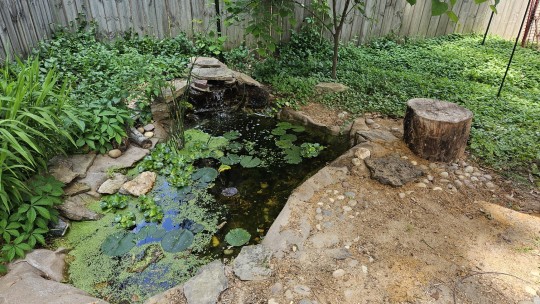
Tadpole season is in full swing, two more clutches of American toad eggs were laid and have hatched out, so there are tadpoles of assorted sizes everywhere! I think the crayfish have been eating them, the first group's numbers diminished faster than last year.
Speaking of babies, there are baby fish too! A lot of them! Last year there were only a handful of babies, but this year there have been several clutches. This time, there are both the xanthic "rosy red" morph and wildtypes! I had been considering adding a few golden topminnows, I'm glad I didn't because I don't want the pond to get overcrowded.
Here's a couple more random pics:

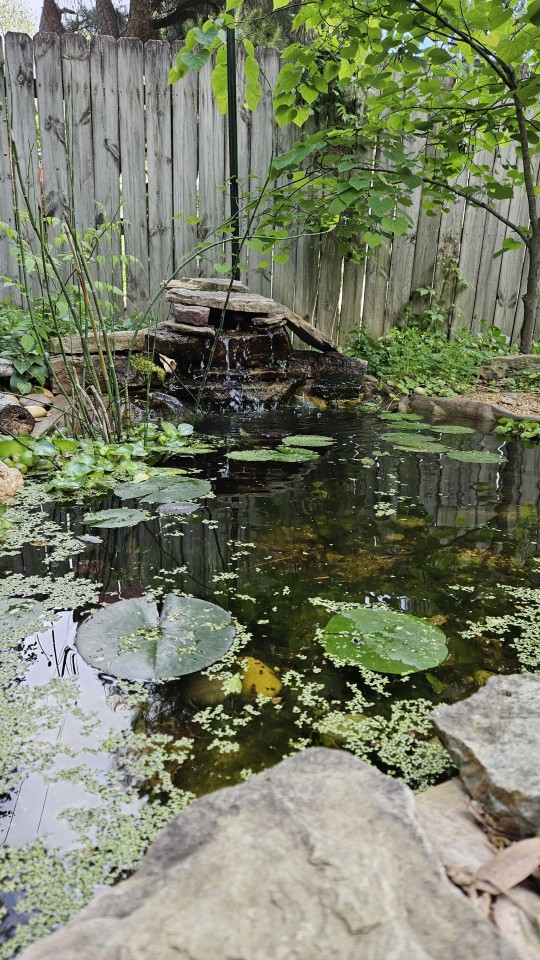
6 notes
·
View notes
Text
Blackstriped topminnow
i love flash drives theyre like small animals to me. like minnows
105K notes
·
View notes
Text
Full disclosure: as lovely as coffeeshops are, there is always a definite nonzero chance that, during the evening slowdown, your barista has stashed scientific notecards in her apron pockets and is playing "Name That Fish".
On an unrelated note, I will never not be mildly amused that the Fundulidae family (fundus meaning "bottom") refers to topminnows.
0 notes
Text
The Center for Biological Diversity today secured court-ordered deadlines from the U.S. Fish and Wildlife Service for final endangered species protections for 10 species, critical habitat designation for three, and decisions about whether protections are warranted for two. The species live across the U.S., from the Southeast to Texas and New Mexico and the West Coast.
“We’re suffering an extinction crisis that threatens to undermine our way of life, so I’m relieved these 15 remarkable species will get the protections they so badly need,” said Noah Greenwald, endangered species director at the Center. “From burly alligator snapping turtles to cute but ferocious martens, these are some of my favorite species and it would just be so tragically sad if we lost them.”
Species Background
Humboldt Marten: These super cute, super ferocious mammals have triangular ears and a bushy tail and are related to minks and otters. Once common in coastal forests in Northern California and Oregon, the animals were devastated by widespread trapping and logging. Today fewer than 400 of these fascinating carnivores remain in a handful of highly isolated fragments of the species’ historic habitat. The Service proposed designating more than 1.4 million acres of critical habitat in October 2021 but failed to finalize the designation within the required one-year deadline.
Alligator Snapping Turtle and Suwannee Alligator Snapping Turtle: Built like a tank and often covered in camouflaging algae, these prehistoric-looking freshwater turtles are known for their spiked shells, large claws and strong, beaked jaws. Alligator snappers spend much of their time underwater, luring prey with their worm-like tongues and occasionally surfacing to breathe. Both species of snapping turtle are threatened by trapping and habitat destruction. The Service proposed to list the Suwannee snapper as a threatened species in April 2021 and the more widespread alligator snapper in November, 2021, but failed to finalize protections within the required one-year deadline.
Mt. Rainier white-tailed ptarmigan: The smallest bird in the grouse family, white-tailed ptarmigans are one of the few animals that live on alpine mountaintops throughout their entire life. They’re adapted from head to toe to thrive in a frigid climate, with feathered, snowshoe-like talons, seasonally changing plumage and a remarkable ability to gain body mass throughout harsh winters. They’re threatened by climate change and disturbance from recreation and development. The Service proposed to list the birds as threatened in June 2021 but failed to finalize protection within the one-year deadline.
Peñasco least chipmunk: These small chipmunks are found only in the Sacramento and White mountains of southwestern New Mexico and are threatened by climate change and development. The Service proposed to protect the chipmunk as endangered with 6,574 acres of critical habitat but has failed to finalize this protection.
Barrens Topminnow: These small Tennessee fish have declined in the face of habitat destruction and invasive mosquito fish and are now only found in a couple streams. They no longer occur in the Barrens Topminnow National Wildlife Refuge. The Service listed them in 2019 but failed to designate critical habitat within one year as required by the Endangered Species Act.
Pearl River Map Turtle: Map turtles are often called “sawbacks” for the ridges along their backs that can form small spikes. Pearl River map turtles can live up to 30 years in the wild and are threatened by habitat loss and degradation from dams, floodplain clearing and river channelization, and trapping. The Service proposed to protect the turtle as threatened in November 2021 but failed to finalize protections.
Texas fatmucket, Guadalupe fatmucket, Texas fawnsfoot, Texas pimpleback, False spike and Guadalupe orb: These six freshwater mussels are found in the Brazos, Colorado, Trinity and Guadalupe river basins and are threatened by pollution and habitat loss and degradation. They were proposed for protection as threatened or endangered (depending on the species) with 1,977 river miles of critical habitat in August 2021. But as with the other species, the Service failed to finalize protection.
Tall Western Penstemon: This imperiled wildflower exists in just five known populations, narrowly distributed from southwestern Washington to northwestern Oregon. They are part of a genus of plants commonly known as beardtongues. Their vivid purple-blue flowers, perched high atop unusually long stems, make a distinctive and beautiful presence in the region’s rare, ecologically intact wet prairies.
Fish Lake Valley Tui Chub: Once found at several locations in Fish Lake Valley in Esmeralda County, Nevada, the tui chub now survives only in a single isolated spring at a privately owned ranch. Groundwater overpumping threatens to dry up their last stronghold.
#enviromentalism#ecology#endangered species act#endangered species#us fish and wildlife service#wildlife conservation
0 notes